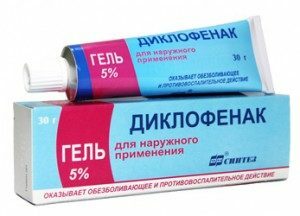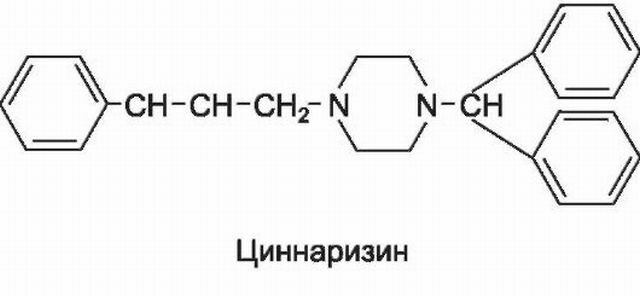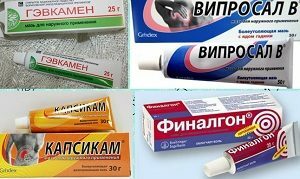 Pain in the knee is a common reason for contacting an orthopedic doctor. Most people periodically encounter this problem throughout life.
Pain in the knee is a common reason for contacting an orthopedic doctor. Most people periodically encounter this problem throughout life.
The knee joint is large and complex, performing a number of important motor functions. Due to heavy workload, it is the most vulnerable in the human musculoskeletal system.
Painful symptoms occur when walking or flexing limbs and, over time, cause more and more anxiety. On the knee and hip joints, the ankle has to load the entire body during movement and standing, so the mobility, motor activity and working capacity of a person depend on the biomechanics of these joints.
Contents of the article
- Why do my knees hurt?
- The role of local pain and inflammation remedies
- Knee pain relief groups
- Local knee arthritis treatment
- Ointments used for arthrosis
- What can elderly people advise?
- For children and adolescents
- Top-10 most popular ointments for knee joints
- What else can anesthetize the joint?
- Anesthetizing injections
- Painkillers in tablet form
- General principles of treatment
Why do knees ache?
Soreness and unpleasant sensations in the knee joint can occur during physical exertion, walking and even at rest.
First the pains are clearly not expressed, appear only after a long walk. But in the future soreness increases, there is a persistent discomfort. The problems begin to bring noticeable concern: the pain of the knee persists day and night. There is a limitation of mobility, difficulty in walking, lifting and descending.
The main causes of pain in the knee joint are serious injuries( damage to the meniscus, ligaments, tendons, dislocations of the knee cap, meniscopathy) or diseases of the musculoskeletal system:
- degenerative-dystrophic changes in knee joints( osteoarthrosis);
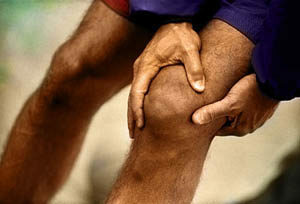
- inflammatory joint disease( arthritis of the knee);
- inflammation of joint capsules, tendons and ligaments( periarthritis, tendonitis);
- systemic connective tissue diseases( rheumatoid arthritis);
- inflammation of the synovial bag( bursitis);
- gout, which occurs due to changes in metabolism in the body;
- infectious inflammation of all components of bone tissue( osteomyelitis);
- joint destruction due to circulatory disorders( Osgood-Schlatter disease);
- neoplasm in popliteal fossa( Baker's cyst);
- Reiter syndrome and others.
The role of local remedies for pain and inflammation
Modern methods of treatment are focused on achieving maximum results with minimal side effects. An important role in the general concept of therapy of joint diseases is occupied by external means.
Creams, ointments, gels, decoctions, lotions are aimed at quickly relieving pain and inflammation in the joints. Medicines act in the application area and do not affect the rest of the body.
External remedies since ancient times have been successfully used to treat various joint ailments. Widespread in modern medicine received natural medicinal substances, such as snake and bee venom, propolis, tinctures and ointments from the willow bark, willow( which contains salicylates, which have anti-inflammatory effect).
Correctly selected ointment allows not only to get rid of pain in the joints, but also increases the effectiveness of the main treatment with the help of medications and injections. External means are safer, help the patient achieve relief and maintain a state of remission.
Groups of knee pain relievers
According to the current classification( approved by WHO and accepted in Russia), all topical preparations for the treatment of diseases of the musculoskeletal system are divided into 4 main groups:
- Non-steroidal anti-inflammatory drugs( NSAIDs) .This group of drugs has analgesic,
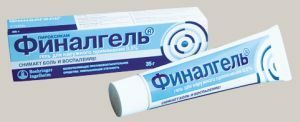 antipyretic effect, a strong anti-inflammatory effect. The pharmacological mechanism is based on blocking the production of prostaglandins( formed at the site of damage to any tissue).The most popular nonsteroidal anti-inflammatory ointments and gels for knee joints are Diclofenac, Ibuprofen, Ketoprofen, Naise, Ketonal, Finalagel, Indomethacin and others.
antipyretic effect, a strong anti-inflammatory effect. The pharmacological mechanism is based on blocking the production of prostaglandins( formed at the site of damage to any tissue).The most popular nonsteroidal anti-inflammatory ointments and gels for knee joints are Diclofenac, Ibuprofen, Ketoprofen, Naise, Ketonal, Finalagel, Indomethacin and others. - Drugs based on alkaloid capsaicin , contained in various types of hot peppers. An alkaloid of this type has an irritating and analgesic effect, causing the death of pathological cells. Pharmaceutical warming ointments with capsaicin: Nikofleks, Kapsin, balm "Golden Star", Finalgon, Kapsikam, Espol and others.
- Salicylic acid derivatives with a pronounced anti-inflammatory effect : anti-inflammatory ointments Bom-benge, Ben-gay( based on methyl salicylate and racemetal), Efkamon, Viprosal, Nizvysal and others.
- Combined and homeopathic remedies .These include an anti-inflammatory drug for external use Dimexide( it helps to relieve pain in bursitis of the knee joint), homeopathic substances Rus Toxicodendron, Apis, Barbasa, Ledum, Phytolyacca( for complete patients) and others.
- The section " other preparations for the treatment of the musculoskeletal system " is also separately highlighted, which includes chondroprotectors( protecting and restoring cartilaginous tissue).The main drug component in chondroprotectors is chondroitin sulfate and glucosaminoglycan, including hyaluronic acid.
The active ingredients of these medicines have large molecules that can not penetrate skin cells and affect tissues, therefore, chondroprotectors are best used not in outward form, but in the form of injections.
Local treatment of knee arthritis
Arthritis of the knee joint causes pain, swelling and redness in the site of inflammation localization.
Ointments and gels based on NSAIDs are used to relieve pain symptoms in knee arthritis. They are easily rubbed and have a pronounced analgesic effect.
Most commonly, the following ointments are used for topical treatment of knee arthritis:
- Gel Deep Relief , which includes ibuprofen and levomenthol, which mutually reinforce each other. The drug is contraindicated in pregnant women and children under the age of 14 years.
- Ketonal gel .Strong ointment, which is also prescribed for various injuries of the joints. The drug is contraindicated in pregnancy and in childhood.
- Nimesulide .Nonsteroid drug, the active substance of which is sulfonanilide. Prescribe for relief of acute pain in the knee and other joints. Contraindicated during lactation, with acute renal and hepatic insufficiency, children under 12 years.
- Orthofen .When arthritis reduces swelling, relieves inflammation, muscle pain. Do not administer to children under 6 years of age, women during pregnancy and lactation.
- Diclofenac .Used for posttraumatic and rheumatoid arthritis. It is applied to the surface of the damaged joint, avoiding exposure to open wound surfaces. Contraindicated in pregnant women and children.
The regenerating ointments have a good effect for the treatment of knee joint inflammation: Viparin, Kobrotoxan, Apizatron, Ungapiven and others.
Ointments used for arthrosis
Osteoarthritis of the knee joint is treated with complex therapy. A special role in drug treatment is taken by topical preparations. Ointments for joints are made from natural ingredients and produce minimal side effects.
For arthrosis of the knee joint, the following ointments are used: 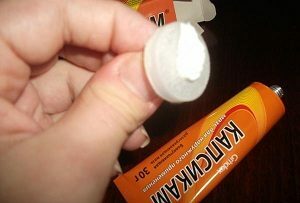
- non-steroidal preparations( Naise, Finalagel, Ketonal);
- based on capsaicin( Finalgal, Capsicum, Nicoflex, Espol);
- on the basis of salicylic acid and salicylates( Viprosal, Bom-benge, Efkamon, and others);
- homeopathic remedies of complex action( Dimexide);
Correctly selected ointment successfully stop the pain syndrome, reduce the inflammatory process. Unlike injections, ointments and gels are easy to use, operate locally and help to avoid negative effects on the liver.
What can I advise the elderly?
Pain symptomatology associated with joint diseases, especially hard to tolerate by older people. The modern range of pharmaceutical products is so rich that it does not allow people of age to choose the right medicine that is suitable for the indications and price.
For elderly people, not only the effectiveness, but also the availability of the product is important, in terms of price-quality ratio we chose three inexpensive painkillers that are suitable for relieving pain and inflammation from the knee joints:
- Ointment Capsicum .It is a good alternative to expensive drugs, helps to get rid of joint pain, reduce the inflammatory process.
- Apisatron .Ointment with bee venom, effective for the treatment of elderly people and athletes. The active substance of the drug expands blood vessels, activates blood circulation, thereby increasing metabolism in pathological zones.
- Diclofenac .Has affordable cost and effectively eliminates pain in the joints, degenerative changes puffiness.
For children and adolescents
In childhood and adolescence, there are diseases associated with inflammation of the joints. Arthrosis can also occur - degenerative-dystrophic changes, in which articular cartilages can collapse.
 Symptoms of such processes are pain and characteristic crunching and snapping in the knees during movement. Rheumatoid arthritis can occur after a cold, SARS, flu, sore throats.
Symptoms of such processes are pain and characteristic crunching and snapping in the knees during movement. Rheumatoid arthritis can occur after a cold, SARS, flu, sore throats.
Self-treatment of joints in children is not allowed, special examination and therapy under the supervision of a doctor is necessary.
An effective and safe drug for the treatment of joints in children is Collagen Ultra. It can be used to treat children older than 12 years in combination with drug therapy prescribed by a doctor.
TOP-10 most popular ointments for knee joints
The modern assortment of ointments for restoring the musculoskeletal system is quite wide. The spectrum of therapeutic effect of these external drugs covers the pathological symptoms that arose as a result of injuries or chronic diseases.
Popular drugs in the treatment of knee and other moving joints are:
- Diclofenac;
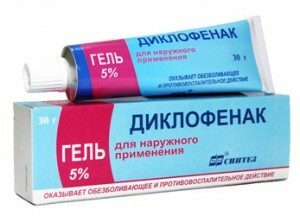
- Finalgon;
- Dimexide
- Final;
- Chondroxide;
- Bystrumgel;
- Apisatron;
- Viprosal;
- Virapine;
- Heparin ointment.
In addition to the above medicines for external use, homoeopathic ointments and gels based on herbs( Ledum, belladonna, St. John's wort, arnica, etc.) are widely used.
What else can I anesthetize the joint?
The choice of specific drugs is performed by a doctor based on anamnesis, clinical and functional examinations. In the presence of chronic pain, the cause and nature of the pathology( reflected, neuropathic or central) is established, after which therapeutic treatment is prescribed.
Any remedy should be prescribed taking into account the state of the patient's systems. In cardiovascular diseases, taking drugs from the NSAID group causes a risk of vascular complications. In this case, for the removal of the pain syndrome, opioids, Paracetamol, are best.
For diseases of the gastrointestinal tract and internal hemorrhage, NAS is prescribed with proton pump inhibitors( Omeprazole).
For severe pains that do not subside after the use of pain medication, the infectious nature of the disease should be excluded. With acute pain, muscle relaxants and local anesthesia will be effective.
Analgesic injections of
The most known non-steroidal anti-inflammatory drugs in injection ampoules in the joint are:
- Meloxicam;
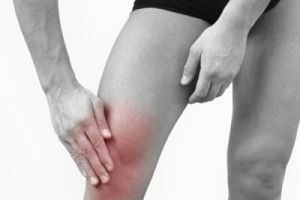
- Ketoprofen;
- Diclofenac;
- ketorolac;
- to Lornoxicam;
- Chondroitin sulfate.
These drugs have a pronounced analgesic and anti-inflammatory effect, but have a number of common contraindications and side effects.
Painkillers in tableted form
According to current research, intramuscular administration and oral administration of drugs have the same effectiveness, since they give the same bioavailability of the drug. Therefore, the side effects in the treatment with tablets and injections are almost identical.
Examples of pain-relieving NSAIDs in tablets:
- Voltaren;

- Ketanov;
- Movalis;
- Celebrex;
- Nimulide;
- Burana;
- Nalgezin;
- Aertal and others.
Combined pain medication:
- Neurodiclavitis( diclofenac and B vitamins);
- Next( ibuprofen and paracetamol);
- Panoxen( diclofenac and paracetamol).
Chondroverters:
- Aflutop, Arteparon, Mukartrin;
- hyaluronic acid or glucosamine.
General principles of treatment
In the treatment of joint diseases of different etiologies, one should adhere to the general rules. The main principle of treatment of pathologies of the musculoskeletal system and diseases of the knee joint, in particular, is the complexity( combination of medicinal treatment, physiotherapy, exercise therapy, manual therapy).
Among the main areas of treatment are the following:
- establishing the causes of the disease, and take measures to eliminate factors contributing to the development of the disease( etiotropic therapy);
- is a basic anti-inflammatory, immunosuppressive therapy;
- physiotherapy treatment;
- motor activity, exercise therapy;
- special diet;
- surgical intervention( if necessary).
It should be remembered that there is no single, universal treatment option for even the same disease. In each individual case, it is important to take into account not only the nature of the disease, the degree of its development, but also the general state of the person, the presence of chronic diseases or other pathologies of the systems functioning of the body systems.
The choice of medicines in each case should be performed by a doctor! Independent appointment is unacceptable, any action aimed at drug treatment should be coordinated with a specialist and prevent uncontrolled administration of drugs.
Treatment of the body's locomotor system requires preliminary careful examination, consultation of narrow specialists and complex measures aimed at immune strengthening of the body, timely full-fledged therapy and the development of a healthy lifestyle program.


